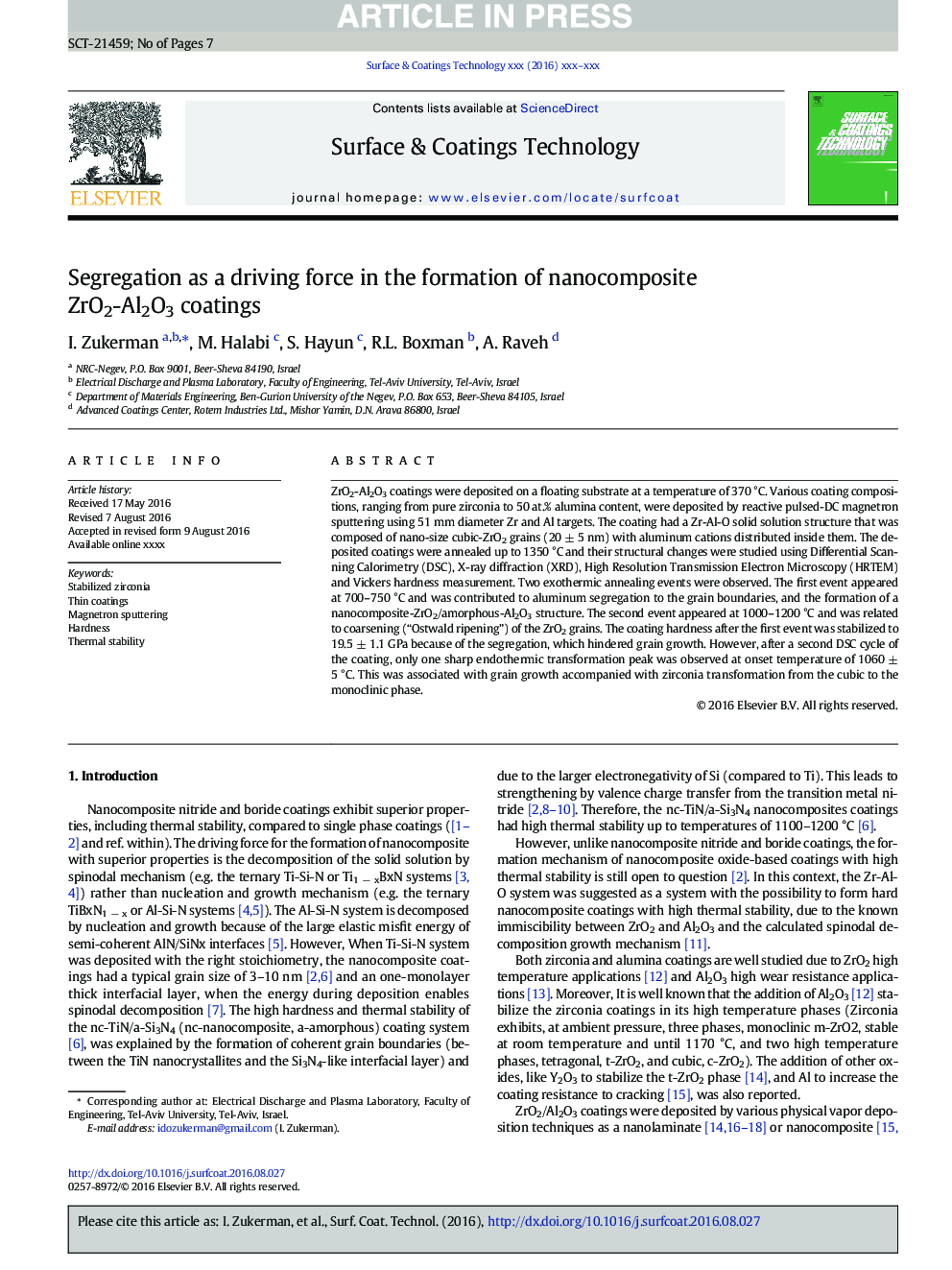| Article ID | Journal | Published Year | Pages | File Type |
|---|---|---|---|---|
| 5464752 | Surface and Coatings Technology | 2017 | 7 Pages |
Abstract
ZrO2-Al2O3 coatings were deposited on a floating substrate at a temperature of 370 °C. Various coating compositions, ranging from pure zirconia to 50 at.% alumina content, were deposited by reactive pulsed-DC magnetron sputtering using 51 mm diameter Zr and Al targets. The coating had a Zr-Al-O solid solution structure that was composed of nano-size cubic-ZrO2 grains (20 ± 5 nm) with aluminum cations distributed inside them. The deposited coatings were annealed up to 1350 °C and their structural changes were studied using Differential Scanning Calorimetry (DSC), X-ray diffraction (XRD), High Resolution Transmission Electron Microscopy (HRTEM) and Vickers hardness measurement. Two exothermic annealing events were observed. The first event appeared at 700-750 °C and was contributed to aluminum segregation to the grain boundaries, and the formation of a nanocomposite-ZrO2/amorphous-Al2O3 structure. The second event appeared at 1000-1200 °C and was related to coarsening (“Ostwald ripening”) of the ZrO2 grains. The coating hardness after the first event was stabilized to 19.5 ± 1.1 GPa because of the segregation, which hindered grain growth. However, after a second DSC cycle of the coating, only one sharp endothermic transformation peak was observed at onset temperature of 1060 ± 5 °C. This was associated with grain growth accompanied with zirconia transformation from the cubic to the monoclinic phase.
Related Topics
Physical Sciences and Engineering
Materials Science
Nanotechnology
Authors
I. Zukerman, M. Halabi, S. Hayun, R.L. Boxman, A. Raveh,
